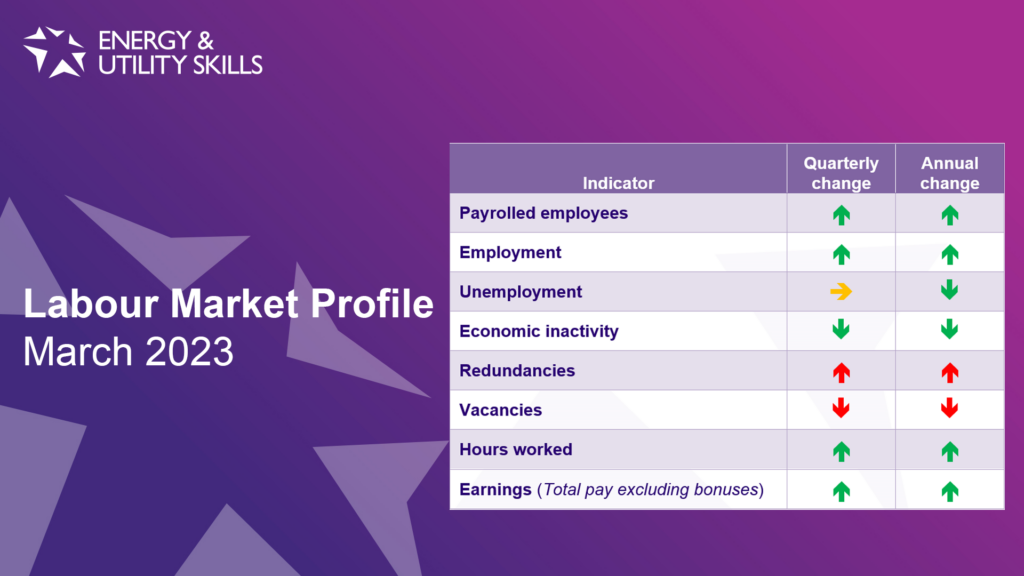
This latest labour market update summarises the state of the UK labour market in the three months to February 2023. It is based on data published by the Office for National Statistics.
The most recent data shows that whilst the situation regarding redundancies and vacancies in the UK economy worsened compared to the last quarter, all other labour market indicators improved.
- The number of payrolled employees increased by 0.3% over the past month to 30 million (up 2.3% over the year)
- The employment rate increased by 0.1% over the quarter to 75.7% (up 0.3% over the year)
- The unemployment rate remained unchanged over the quarter at 3.7% (down 0.3% over the year)
- The economic inactivity rate fell by 0.2% over the quarter to 21.3% (down 0.1% over the year)
- There were 94,000 redundancies during the quarter – 6,000 more than the previous quarter (26,000 more than a year ago)
- The number of vacancies fell by 5.1% over the quarter to 1,124,000 (down 12.6% over the year)
- In the Electricity & Gas industries, the number of vacancies increased by 3.6% over the quarter (up 14% over the year) to around 6,000
- In the Water supply, sewerage, waste & remediation activities industries, the number of vacancies increased by 3% over the quarter (down by 18.8% over the year) to around 7,000
- Total hours worked increased by 7.3 million hours over the quarter to 1.042 billion hours (up 10.2 million hours over the year)
- Earnings growth in average total pay (including bonuses) was up 5.7% and regular pay (excluding bonuses) was also up 6.5%
- Average regular pay growth for the private sector was up 7%
- Growth in total and regular pay fell in real terms (adjusted for inflation) over the year by -3.2% for total pay and -2.4% for regular pay
The Office for National Statistics’ full update on the state of the labour market in March 2023 can be found here.
The next update will be on 18 April 2023.
For further information about the labour market, migration or regional labour market indications, please email Rob Murphy, our in-house strategic workforce planning consultant.
![LMI Graphic 2 [Converted] Labour Market Profile Data Statistics Graphic](https://www.euskills.co.uk/wp-content/uploads/2022/07/LMI-Graphic-2-Converted.jpg)